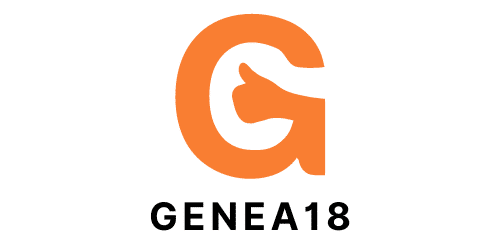How Can Real-Time Stroke Analysis Benefit Competitive Rowers?

In the high-speed, physically demanding world of rowing, performance is everything. A single stroke can make or break a race. In this context, the importance of real-time stroke analysis cannot be overstated. It provides valuable data to rowers and coaches, offering insights into every aspect of the rowing stroke, from coordination and power to speed and velocity. In this article, we will delve into how real-time stroke analysis can boost performance, improve training, and make the difference between winning and losing.
Harnessing the Power of Data
Data has become an indispensable tool in the world of athletics. In rowing, real-time stroke analysis has transformed the way athletes and coaches approach training and performance.
In parallel : What Are the Long-Term Effects of High-Intensity Plyometrics on Sprinters’ Joint Health?
The rowing stroke is a complex combination of force and coordination. Understanding and optimizing each phase of the stroke – the catch, the drive, the finish, and the recovery – can drastically improve a rower’s efficiency and speed.
Here is where real-time stroke analysis comes into play. Advanced data systems can capture the minute details of each stroke, offering valuable insights into factors like stroke length, power, coordination, and velocity. This information, when used correctly, can help rowers understand their strengths and weaknesses and make necessary adjustments to their technique.
Also to see : How to Assess and Enhance Functional Movement in Professional Golfers?
Moreover, real-time stroke analysis provides immediate feedback during training sessions, allowing for swift corrections and adjustments that can have a significant impact on performance.
The Role of Technology in Real-Time Stroke Analysis
Advances in technology have made real-time stroke analysis in rowing possible. Google Scholar, for instance, has numerous scientific articles detailing the application of technology in rowing. The use of specific software and hardware, such as sensors placed on the boat or on the rower’s body, can provide extensive data on every aspect of the stroke.
These systems monitor a variety of parameters, including stroke rate, force, power, speed, and velocity. The data gathered can then be analyzed in real-time, providing immediate feedback to the rower and coach. This means that the rowers can adjust their technique during the training session, based on the data provided, maximizing their training efficiency and potential for improvement.
The technology also allows for the analysis of several rowers simultaneously, which can be particularly useful in crew rowing. The ability to analyze the coordination and synchronization of the crew in real-time can significantly improve the performance of the entire boat.
Stroke Analysis and Performance
The ultimate goal of real-time stroke analysis is to enhance performance. To this end, the data captured and analyzed provides a comprehensive understanding of how each stroke is executed and how it can be improved.
An optimal rowing stroke is one that produces the maximum velocity with the least amount of energy. By analyzing the stroke in real-time, rowers can adjust their technique to achieve this balance.
For instance, if the data indicates that a rower’s stroke is too short or lacks power, they can immediately work on extending their reach or increasing their force. Conversely, if the stroke is too long or too powerful, they can focus on efficiency and control.
Similarly, a coach can use the data to tailor training programs to the specific needs of each rower, focusing on areas of weakness and building on strengths. This individualized approach to training can significantly enhance performance and give competitive rowers an edge over their opponents.
The Future of Real-Time Stroke Analysis
The future of real-time stroke analysis in rowing looks promising, with emerging technologies promising even greater precision and depth of data.
Machine learning algorithms, for instance, could further enhance the analysis by identifying patterns and predicting outcomes. This could allow rowers and coaches to make even more informed decisions and strategies.
Another possibility is the integration of biomechanical data, such as muscle activation and joint angles, into the stroke analysis. This could provide even more detailed insights into the rowing stroke and open up new avenues for performance enhancement.
In conclusion, real-time stroke analysis is a powerful tool in the world of competitive rowing. It provides invaluable data that can be used to optimize technique and enhance performance. As technology continues to advance, the possibilities for real-time stroke analysis are likely to expand, promising exciting developments for the future of rowing.
Optimizing Training Plans with Real-Time Stroke Analysis
In the pursuit of excellence in rowing, fine-tuning the training plan is critical. Real-time stroke analysis offers a robust platform for such fine-tuning, providing insights that can guide a rowing coach in developing an optimal training program.
Delving into the specifics, data derived from real-time stroke analysis includes parameters such as stroke rate, power, force, and speed. These are integral components of the rowing stroke cycle, encompassing the catch, the drive, the finish, and the recovery. Understanding these aspects in detail can allow the coach to identify areas where the rower excels and where improvement is needed.
For instance, if the data shows that a rower’s peak force during the drive phase is not optimal, the training plan can be adjusted to focus more on strength training. Similarly, if the stroke rate is consistently high but the boat velocity is not proportionate, the coach might deduce a lack of efficiency in the rower’s technique and modify the training accordingly.
Thanks to advanced technology, such as inertial sensors and motion capture, the analysis can be done in real time. This allows for immediate feedback, facilitating on-the-spot corrections and adjustments during training sessions. As noted in numerous articles on Google Scholar and Scholar Crossref, this immediate feedback is a significant benefit, enabling more efficient training and faster progress.
In crew rowing, real-time stroke analysis also plays a crucial role in enhancing crew coordination. By analyzing the strokes of each crew member simultaneously, the coach can ensure that the team is working in perfect sync, thereby maximizing the boat’s speed and efficiency.
The Role of Emerging Technologies in Real-Time Stroke Analysis
Continued advancements in technology are set to expand the possibilities of real-time stroke analysis in rowing. As we look to the future, there are two key areas of focus: machine learning and biomechanical data.
Machine learning algorithms are an exciting prospect, with potential applications in real time stroke analysis. By identifying patterns in collected data, these algorithms can predict outcomes, informing decisions and strategies. For instance, machine learning could predict how changes in stroke rate or power will affect boat velocity, allowing for more strategic and precise adjustments.
Furthermore, incorporating biomechanical data into the analysis can provide deeper insights into the rowing stroke. Data on muscle activation and joint angles, for instance, can be gathered using inertial sensors and other technology. This level of detail can provide even more specific feedback on technique, enabling a more personalized and effective training plan.
Looking ahead, we can expect real-time stroke analysis to become even more integral to rowing performance. As these technologies continue to evolve and more data becomes available for analysis, the potential for improvement in rowing technique and performance is immense.
In Conclusion
Real-time stroke analysis has revolutionized the world of competitive rowing. It provides a wealth of detailed data in real time, allowing for immediate feedback and adjustments during training. This, in turn, leads to more efficient training, improved technique, and ultimately, enhanced performance.
Emerging technologies such as machine learning and biomechanical data analysis hold great promise for the future of real-time stroke analysis. They stand to provide even more detailed insights, enabling even more precise adjustments and personalized training plans.
As we continue to harness the power of data in rowing, we are likely to see even more exciting developments in the field. The future of rowing is set to become ever more data-driven, promising a new era of performance enhancement and competitive success.
